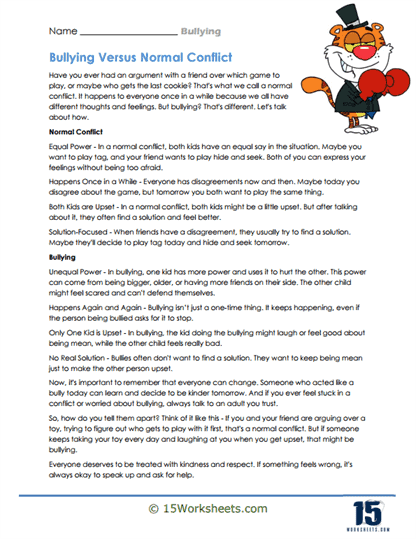Bullying Versus Normal Conflict

Worksheet Description
The worksheet provided delves into the important distinction between normal conflict and bullying, aiming to educate young readers on the nuances of social interactions. It clarifies that while arguments and disagreements are a part of everyday life and can be considered normal conflicts, bullying is a harmful behavior where power is misused to hurt others. The worksheet presents scenarios to illustrate these differences, such as a balanced argument over a lost cookie, symbolizing an equal power dynamic, versus one person exerting control over another, which indicates bullying. These examples are designed to help children understand that while conflicts can be resolved through mutual discussion and compromise, bullying is a repetitive and intentional act of aggression that requires intervention.
The second part of the worksheet outlines the characteristics of bullying, including an imbalance of power, the repetitive nature of the behavior, and the intent to cause harm. It emphasizes that bullying is not a one-time incident but a persistent pattern that can lead to long-term distress for the victim. To empower the reader, the worksheet encourages reflection on personal feelings and provides advice on seeking help. It reinforces the principle that everyone deserves respect and that speaking up against bullying is not only brave but necessary for fostering a safe and supportive community.
